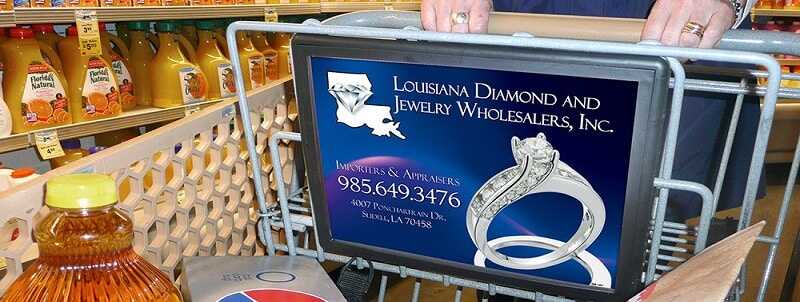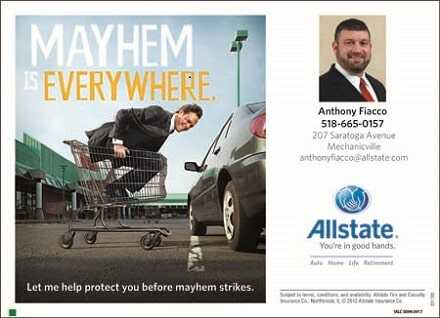Did you know that the average shopper spends 43 minutes in the grocery store per trip? What’s more, they visit local stores an average of 1.7 times per week. For small business owners, this means that advertising in grocery stores has the potential to reach your consumers more than an hour per week and more than 80 times per year.
Those looking to leverage this power should look no further than grocery cart advertising. Unlike other marketing methods, cart advertising is quite simple for small business owners.
- You partner with a company that specializes in shopping cart advertising.
- You determine how long you want your ad to run.
- You decide what content and information to include on the ad.
- You choose how many stores and carts you want to place the ad on.
Sounds easy enough, right? What we’re going to consider today is the actual content of your ads. In doing so, we’ll take a look at five cart advertising examples in different industries. Next, we’ll review best practices for creating ads—and what they should include. Let’s begin.
Cart Advertising Examples
Small businesses of all types can reap the many benefits of cart advertising. Generally, businesses that can’t advertise on carts are ones that provide direct competition to the store. This includes restaurants, pharmacies, liquor stores, and tobacco shops. Despite these minor limitations, the sky is virtually the limit for other industries. Let’s analyze five examples.
Insurance Agents
Dentists and Orthodontists
Auto Repair Shops
Real Estate Agents
Home Improvement Contractors
Regardless of the industry, messaging, design, or color, you probably notice similarities among these five ads. Ideally, your ad should answer these five questions:
- What is your business’s name?
- What do you do?
- Where are you located?
- How can shoppers contact you?
- What makes your business special?
Let’s dig a little deeper.
Cart Advertising Best Practices
Content
So, what makes a good grocery store cart ad? As a rule of thumb, you should keep it simple—and stick to one obvious message. Your goal should be to make a strong first impression so your target audience remembers the ad. As these cart advertising examples illustrate, it’s important to avoid cluttering your ad with too many selling points or information. If everything stands out, nothing will stand out. Instead, highlight one central message that will leave an impression in the shopper’s mind.
Information
As we’ve reviewed, it’s essential to include some piece of contact information, including your phone number, address, website, or social media handles. However, it’s also helpful to use information-rich content that qualifies your services. For example, the auto service advertisement above mentions its services and describes them with “at a price that’s fair.” By providing plenty of information about your business, you will give future consumers enticing information that inspires them to visit your business.
Placement
Placement is key when it comes to optimizing your ads. Knowing where your ads will be located can help you create a winning campaign. Shopping cart advertisements are generally placed in one of three locations:
- The display in the child seat
- The display inside the front end of the cart
- The display outside the front end of the cart
Spacing and sizing must be considered when creating ads. For example, the display outside of carts enables brands to access inserts that are large and colorful enough to capture the attention of shoppers while they wander through aisles. Ads that are on the inside of the cart should be clearer and concise—and include only essential information—as these ads are only several feet from shoppers’ eyes at all times.
Ultimately, cart advertisements can be considered miniature billboards. As these cart advertising examples illustrate, ads can be custom-designed to showcase your business. Cart advertising increases brand awareness, recognition, and reach. Not only does it offer oversight over design, it also provides the potential of personalization. Business owners can tailor messaging around age, gender, average household income, and other demographic factors to ensure that ads are reaching a relevant audience.









 By IndoorMedia Marketing
By IndoorMedia Marketing
